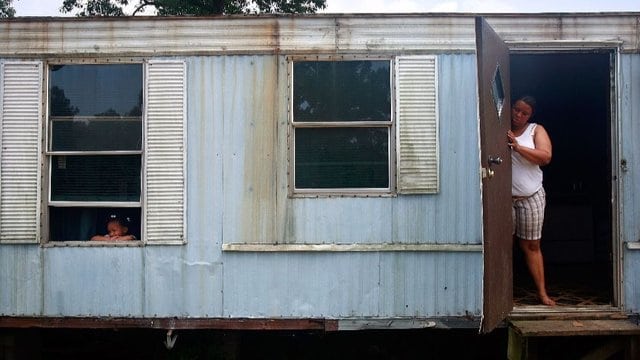
By James Heckman and Gonzalo Schwarz — October 8, 2018
[social_share style=”square” align=”horizontal” heading_align=”inline” text=”Inaccurate reporting on social inequality makes matters worse” heading=”” facebook=”1″ twitter=”1″ google_plus=”1″ linkedin=”1″ pinterest=”0″ link=”” /]
This article was originally published in The Hill.
We live at a time when trust in the media to report the facts honestly is at an all-time low.
Extreme political polarization, and its influence on our daily lives, makes it more important than ever for media outlets to report accurately, especially when covering important and contentious issues, such as race and the state of social mobility in America.
The same note of caution should be employed for academic researchers and their influence on both the media and policy community’s commentary.
Recent reporting on “Race and Economic Opportunity in the United States: An Intergenerational Perspective,” published by the Equality of Opportunity Project, risks misleading audiences by cherry-picking the report’s findings and pushing its conclusions further than the data justify.
The research uses census data that includes nearly all Americans now in their late 30s and documents significant disparities in income between racial groups, some of which substantially persisted across generations.
By far, the most striking finding was the stark gap in one measure of relative economic mobility between black and white Americans — driven by differences in income between black and white men. (Other measures show no such gap).
The New York Times summarized the findings through detailed graphics beneath a headline that read, “Extensive Data Shows Punishing Reach of Racism for Black Boys.”
While racism may well be pervasive, the exclusive focus on racism overlooks other signs of racial progress within the study itself among black girls, Hispanic- and Asian-Americans and simply does not fit with the vast body of literature documenting the factors and causes of economic success.
Unfortunately, the study itself has considerable shortcomings that over-emphasize some outcomes and correlations without delving deeper into past literature on social mobility.
Some of the factors not properly addressed in the report include the influence of mass incarceration, the changing dynamics in family structure and family influence on child outcomes.
Furthermore, the discussion on the power of place and the effects of neighborhoods misses the characteristics of these neighborhoods and how they reflect the average characteristics of the people living in them.
For example, much like the racial gap in economic mobility, incarceration is an overwhelmingly male phenomenon. Additionally, black males are much more likely be incarcerated than their white peers.
The study notes that one-fifth of black males were in prison during each wave of its surveys of income but fails to note the significance of this point. The study does not know criminal histories and therefore cannot capture the potent effect of a criminal record on employment and earnings.
This dynamic alone greatly affects measurements of economic mobility and studies like the Pittsburgh study on crime have shown the negative impact of incarceration on future generations, with sons in particular, much more likely to eventually spend time in prison themselves and the study does not control for this crucial factor.
Furthermore, there is a wide body of credible academic scholarship on factors affecting future economic outcomes including a disappointingly large gap in skills not covered in this study, which only compares income of children to income of parents.
Extensive academic literature by sociologists and economists has shown that the income of parents is not the main predictor of the income of their children, and in fact, parenting and other more fundamental causes that allow kids to acquire more cognitive (smarts) and non-cognitive skills are far more relevant.
Approximately 50 percent of the variance in the inequality of lifetime earnings is determined by age 18 and most of the gaps observed at age 18 to explain later adult outcomes are present as early as age five.
Because skills are so important and because the most impactful investment in the development of such skills begins so early, the family is the most important skill producer.
Families with two parents, which typically have a greater ability to spend time with children, emotionally and cognitively stimulating them from an early age, are most effective in building the necessary skills for a child’s future success.
The sharp decline in the proportion of children growing up in two-parent households in recent decades jeopardizes the ability for the next generation to effectively develop the skills they need and threatens to widen the racial mobility gap.
In 1960, 87 percent of children were living with two parents, while just 9 percent lived in single parent households. By 2016, 69 percent of children were living in two-parent households and 23 percent were living with a single mother.
Furthermore, as of 2014, less than half of black children were living in two-parent households while the majority of white, Asian and Hispanic children were.
Skill disparities, family dynamics, early childhood development and incarceration effects were all but left out of the New York Times coverage and the academic report itself, even though there exists a wide body of scholarly work on the mechanisms that produce economic success and the factors influencing disparities between various populations.
Consilience between previous academic studies with some of the new wave of mobility studies is needed. The crucial role of the family in building the early skills for success highlights the importance of eliminating the marriage penalties in the tax code and various welfare programs that disincentivize the formation of long-term stable marriages and families.
Meaningful criminal justice reforms that reduce unnecessary incarceration must be a part of any effort to increase upward economic mobility.
Incomplete reporting, which ignores these realities, leads to public outrage over what are very likely to be just the visible symptoms of more fundamental problems.
Such a dynamic risks pursuing misguided and ineffective public policy solutions. Understanding the roots of social mobility by honestly and critically engaging with the academic literature on the subject is essential to closing the black-white male mobility gap.

